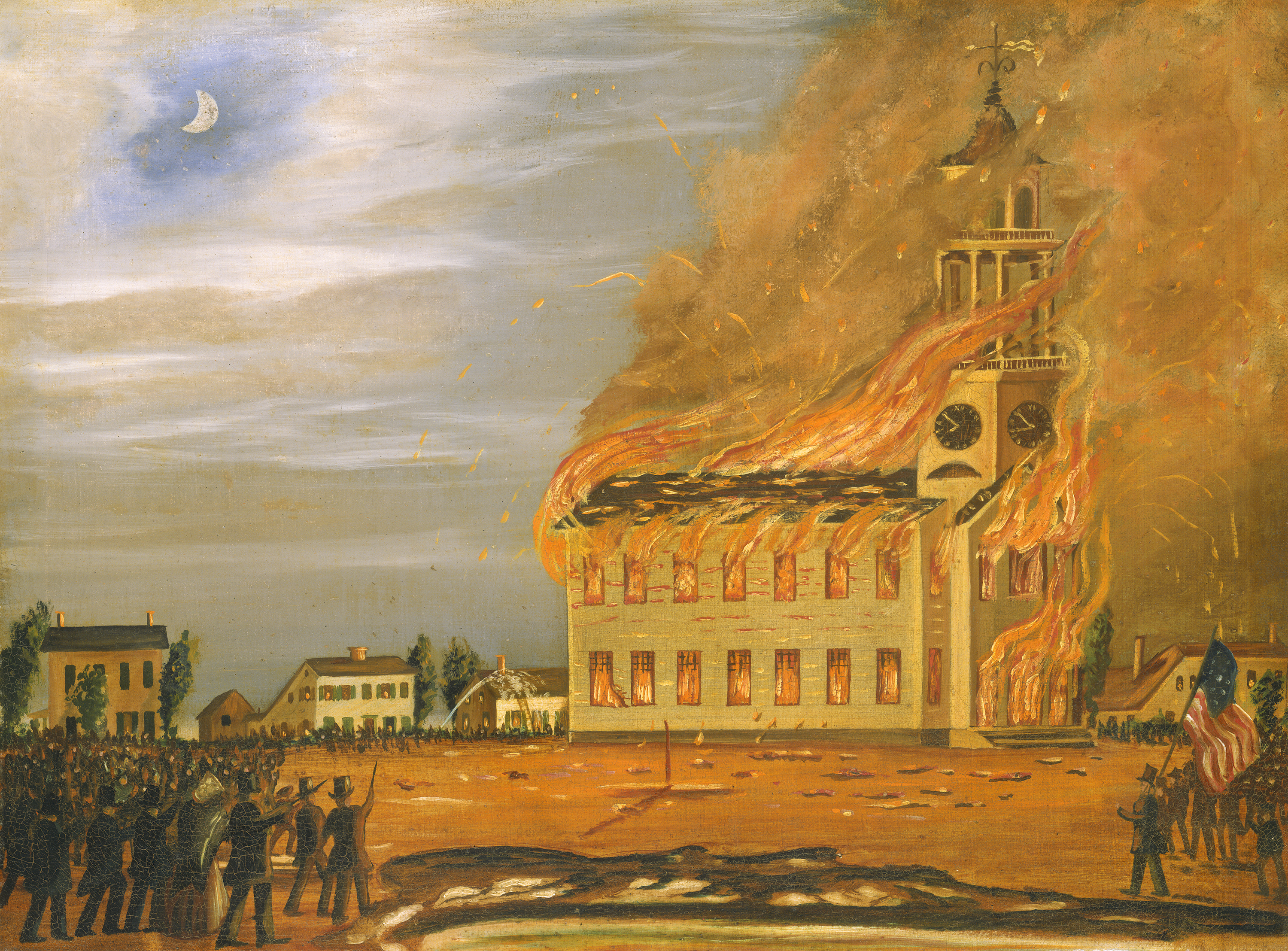Bath, Maine Anti-catholic Riot Of 1854 on:
[Wikipedia]
[Google]
[Amazon]
 The anti-Catholic riot that occurred in Bath on July 6, 1854 was one of a number that took place in coastal Maine in the 1850s, including the
The anti-Catholic riot that occurred in Bath on July 6, 1854 was one of a number that took place in coastal Maine in the 1850s, including the
 The anti-Catholic riot that occurred in Bath on July 6, 1854 was one of a number that took place in coastal Maine in the 1850s, including the
The anti-Catholic riot that occurred in Bath on July 6, 1854 was one of a number that took place in coastal Maine in the 1850s, including the tarring and feathering
Tarring and feathering is a form of public torture and punishment used to enforce unofficial justice or revenge. It was used in feudal Europe and its colonies in the early modern period, as well as the early American frontier, mostly as a ty ...
of a Catholic priest, Father John Bapst in 1854 in the town of Ellsworth. The first and most violent anti-Catholic riot in Maine took place in Bangor, Maine in 1834. The resurgence of violence in the 1850s was associated with the rise of the Know-Nothing Party
The Know Nothing party was a nativist political party and movement in the United States in the mid-1850s. The party was officially known as the "Native American Party" prior to 1855 and thereafter, it was simply known as the "American Party". ...
and the passage of the Maine law
The Maine Law (or "Maine Liquor Law"), passed on June 2, 1851 in Maine, was the first statutory implementation of the developing temperance movement in the United States.
History
Temperance activist Neal Dow helped craft the Maine liquor law w ...
, America's first statewide prohibition ordinance.
The Bath mob was gathered and inflamed by a traveling street-preacher named John S. Orr, who called himself "The Angel Gabriel", dressed in white robes, and carried a trumpet. Orr delivered an anti-Catholic
Anti-Catholicism is hostility towards Catholics or opposition to the Catholic Church, its clergy, and/or its adherents. At various points after the Reformation, some majority Protestant states, including England, Prussia, Scotland, and the Uni ...
sermon on a commercial street, the crowd of spectators eventually swelling to over a thousand and blocking carriage traffic. Some began shouting for the mob to move on the Old South Church, a structure built by the Congregationalists in 1805 but lately abandoned by them and purchased by Irish Catholics. In the late afternoon the crowd marched to the church, began smashing up the pews, hoisted an American flag from the belfry, rang the bell, and set it on fire. After the church was burned, a smaller crowd of at least a hundred roamed through the streets all night. There is no record of attacks upon any Catholic persons. The event was visually recorded at the time in a series of three history paintings
History painting is a genre in painting defined by its subject matter rather than any artistic style or specific period. History paintings depict a moment in a narrative story, most often (but not exclusively) Greek and Roman mythology and Bible ...
by local artist John Hilling
John Hilling (1822 – 14 August 1894) was a British painter who lived and worked in America.
He moved from Britain to America in the 1840s, settling in the town of Bath, Maine. In 1864 he enlisted as a private in the army during the American Civi ...
.
A year after the riot, on November 18, 1855, the Catholic Bishop of Portland attempted to lay the cornerstone for a new church on the same site, but the congregation was chased away and beaten.Henry De Courcy, The Catholic Church in the United States, TW Strong, 1856, p. 522
References
{{Riots in the United States (1607–1865) 1854 in Maine 1854 riots July 1854 events Anti-Catholic riots in the United States Bath, Maine Attacks on churches in North America Riots and civil disorder in Maine Attacks on religious buildings and structures in the United States Know Nothing Anti-Catholicism in Maine Irish-American culture in Maine